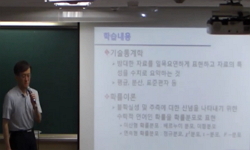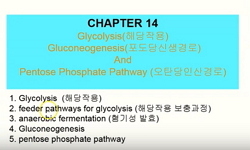The distribution, metabolism and excretion of CKD-602{20(S)-7-[2-(N-Isopropylamino)ethyl]camptothecin HCI), a new camptothecin derivative, were investigated in rats after a single administration of CKD-602. 1. The tissue levels of CKD-602 given to mic...
http://chineseinput.net/에서 pinyin(병음)방식으로 중국어를 변환할 수 있습니다.
변환된 중국어를 복사하여 사용하시면 됩니다.
- 中文 을 입력하시려면 zhongwen을 입력하시고 space를누르시면됩니다.
- 北京 을 입력하시려면 beijing을 입력하시고 space를 누르시면 됩니다.

신규 캄토테신계 항암제 CKD-602의 약물동태 : 분포, 대사 및 배설 = Pharmacokinetic Study of CKD-602, A New Camptothecin Derivative: Distribution, Metabolism and Excretion
한글로보기https://www.riss.kr/link?id=A100402563
- 저자
- 발행기관
- 학술지명
- 권호사항
-
발행연도
1998
-
작성언어
-
- 주제어
-
KDC
518
-
등재정보
KCI등재
-
자료형태
학술저널
- 발행기관 URL
-
수록면
437-446(10쪽)
- 제공처
- 소장기관
-
0
상세조회 -
0
다운로드
부가정보
다국어 초록 (Multilingual Abstract)
The distribution, metabolism and excretion of CKD-602{20(S)-7-[2-(N-Isopropylamino)ethyl]camptothecin HCI), a new camptothecin derivative, were investigated in rats after a single administration of CKD-602. 1. The tissue levels of CKD-602 given to mice by the intravenous route at a dose of 20mg/kg were the highest in intestine, followed in descending order by kidney, liver, stomach,lung, heart, spleen and plasma. The concentrations of CKD-602 after 24hrs decreased to less than 2% of the peak level in most tissues except the skin. The urinary and fecal excretion of CKD-602 were 47.6% and 44.4% of the administered dose, respectively, with 0.7% remaining in the rinse. 2. After administration of CKD-602 at 10mg/kg in rats, metabolism of this compound was examined in plasma, urine, and feces. The plasma samples were collected for 24hr, urinary and fecal samples for 72hr. While any peak of CKD-602 in HPLC chromatograms was not detected from plasma and urine it was detected in feces (peaks, 9.8 min). However, additional peak area was about 0.5% of the peak area of parent CKD-602. Therefore, CKD-602 may be eliminated with the parent form and rarely metabolized in the body. 4. After I.v. administration of CKD-602 at 10mg/kg in rats, urinary and fecal excretions were examined for 72hrs post dose period. 87% of total urinary excretion of CKD-602 was excreted within 8hr after administration, 53%, and 32% of total fecal excreted amounts were determined in 0-24 hr and 24-48hr periods, respectively. The total excretion amounts of CKD-602 into urine and feces were 94% of the administered dose.
동일학술지(권/호) 다른 논문
-
췌장 베타세포에서 인터루킨-1beta로 유도한 인슐린 의존형 당뇨병 실험 모델
- 대한약학회
- 이인순(Ihn Soon Lee)
- 1998
- KCI등재
-
퀘르세틴 및 퀘르세틴 배당체들의 벤조피렌에 대한 유전독성억제효과
- 대한약학회
- 김정한(Jeong Han Kim)
- 1998
- KCI등재
-
탄소섬유 방제 마스트의 농약차단효과 및 흰쥐의 급성 흡입독성 예방효과
- 대한약학회
- 김창종(Chang Jong Kim)
- 1998
- KCI등재
-
- 대한약학회
- 이승호(Seung Ho Lee)
- 1998
- KCI등재




 ScienceON
ScienceON 스콜라
스콜라







